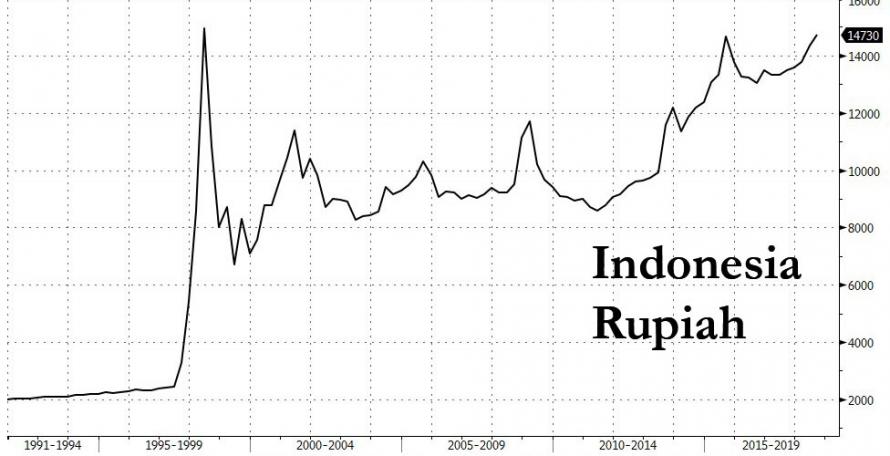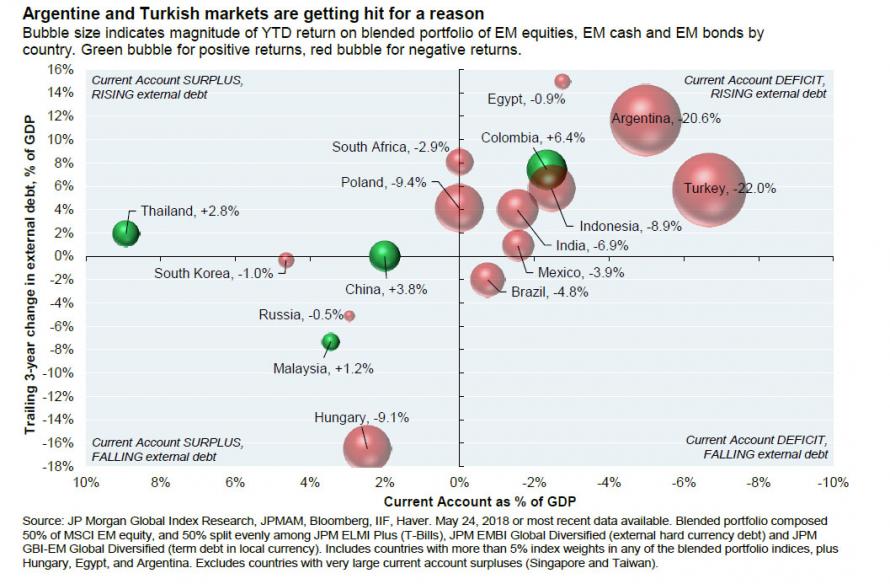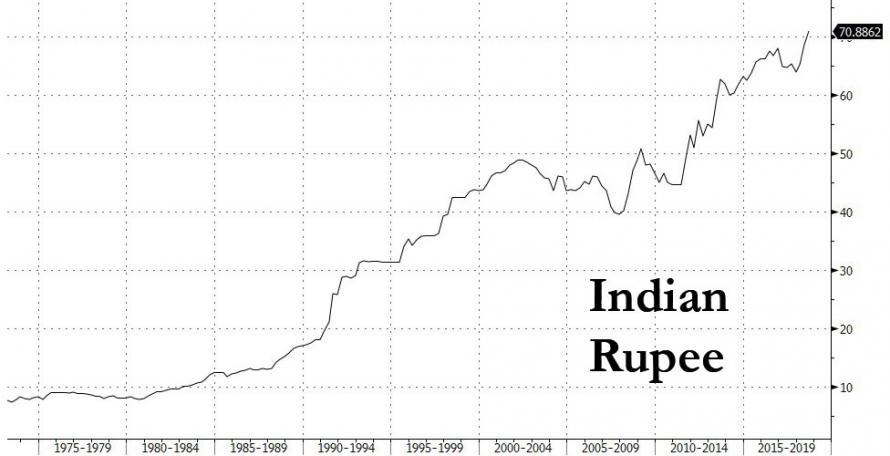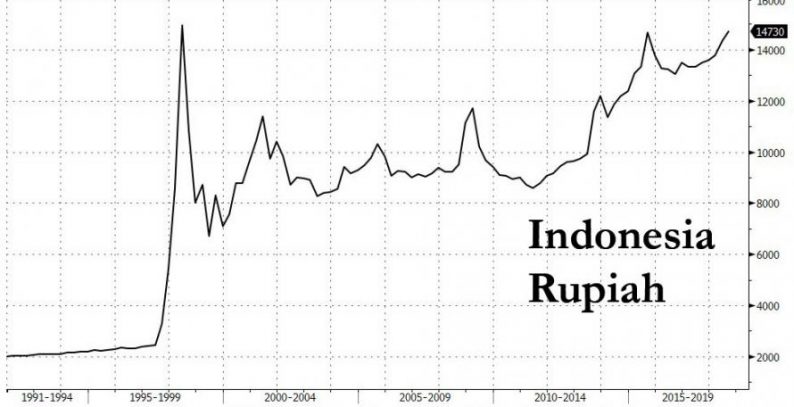Despite four rate hikes by the Bank of Indonesia since May, Indonesia’s rupiah slid to a two-decade low, falling to 14,750 per dollar, a level last hit during the Asian Financial Crisis of 1998, and just shy of an all-time low, spurring yet another intervention from the central bank as the contagion from the collapse in Argentina and Turkey has turned the market’s attention on emerging markets with current account deficits.

Indonesia’s benchmark bond yields rose 10 basis points to the highest level since 2016, while the Jakarta Composite Index slipped as much as 1.3%.
The plunge took place despite a notice from the central bank that it was intervening in the foreign exchange and bond markets, according to Nanang Hendarsah, executive director for monetary management.
As a reminder, after Argentina and Turkey, Indonesia is next to be hit on this chart from JPM we first showed at the start of June, which plotted countries with a current account deficit and rising external debt.

The rupiah is down 7.8% this year, and first came under pressure from a resurgent greenback and climbing U.S. Treasury yields. The escalating trade war between the U.S. and China, followed by the Turkey turmoil then added to its woes. It’s the second-worst performing major Asian currency this year, after the Indian rupee.
Meanwhile, over in India, the rupee also fell to a new record low, trading 71.035 against the dollar, set for the biggest monthly decline in three years, although so far India’s capital markets excluding FX have barely been affected, with the Nifty trading just shy of all-time highs.

As Bloomberg notes, as investors liquidated Turkish and Argentinian assets, countries with large current-account deficits such as Indonesia and India have also seen their currencies and bonds come under selling pressure. The rout in the Argentinian peso and Turkish lira end the recent stability bought by Bank Indonesia’s four rate hikes since mid-May, which has led to a return of foreign funds into its debt market.













Leave A Comment